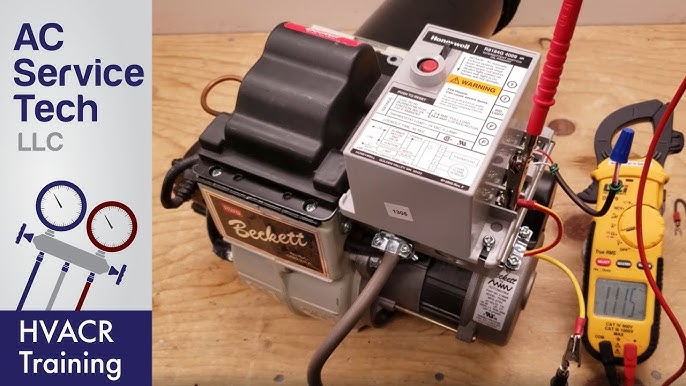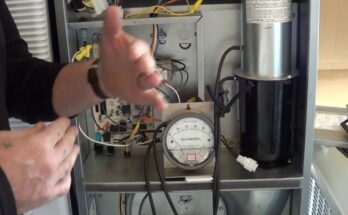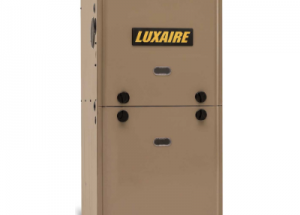For Beckett burner troubleshooting, check for fuel supply issues and ensure proper air adjustment. Inspect the ignition system for faults.
Beckett burners are widely used in heating systems, known for their reliability and efficiency. Despite their robustness, occasional issues can arise, requiring quick and effective troubleshooting. Common problems include fuel supply disruptions, air adjustment errors, and ignition system malfunctions. Addressing these issues promptly ensures optimal burner performance and prevents further complications.
Regular maintenance and inspections can significantly reduce the likelihood of such problems. This guide provides practical steps for diagnosing and fixing common Beckett burner issues, helping maintain your heating system’s efficiency and reliability. Stay proactive to keep your Beckett burner running smoothly all year round.
Common Issues
Understanding common issues with Beckett Burners can save time and money. Quick identification helps in resolving problems faster. Below are some typical issues faced by users.
No Ignition
A common problem is the burner not igniting. There are several reasons for this:
- Power supply issues: Ensure the burner is plugged in.
- Thermostat setting: Check if the thermostat is set correctly.
- Fuel supply: Verify the fuel tank is not empty.
- Igniter failure: The igniter might need replacement.
| Cause | Solution |
|---|---|
| Power supply issues | Ensure the burner is plugged in. |
| Thermostat setting | Check if the thermostat is set correctly. |
| Fuel supply | Verify the fuel tank is not empty. |
| Igniter failure | The igniter might need replacement. |
Flame Goes Out
Another issue is the flame going out unexpectedly. This can be due to:
- Air in fuel line: Bleed the air from the fuel line.
- Dirty nozzle: Clean or replace the nozzle.
- Blocked air filter: Check and clean the air filter.
- Flame sensor: Ensure the flame sensor is clean.
Regular maintenance can prevent these issues. Keep the burner in good condition. Follow the manufacturer’s guidelines for best results.
Safety Precautions
Before troubleshooting your Beckett Burner, prioritize safety. Follow these safety precautions to prevent accidents. Ensuring safety will protect you and your equipment.
Wear Protective Gear
Always wear protective gear when working on your Beckett Burner. This includes safety glasses, gloves, and appropriate clothing. Protective gear shields you from possible burns, cuts, and other injuries.
- Safety Glasses: Protect your eyes from sparks and debris.
- Gloves: Prevent burns and cuts on your hands.
- Proper Clothing: Wear non-flammable, close-fitting clothes.
Turn Off Power
Ensure the power is off before starting any troubleshooting. This prevents electric shocks and accidental burner ignition. Follow these steps to turn off the power safely:
- Locate the Power Switch: Find the main power switch for the burner.
- Switch Off: Turn the switch to the ‘off’ position.
- Unplug: If possible, unplug the burner from the power source.
Double-check that all power sources are disconnected. This includes any backup systems. Safety should always be your first step.
Tools Needed
Troubleshooting a Beckett Burner requires the right tools. With the correct tools, you can diagnose and fix issues quickly. Below, we will cover the basic tools and specialized tools necessary for effective troubleshooting.
Basic Tools
Start with these basic tools to ensure you are prepared:
- Screwdrivers: Both flat-head and Phillips are needed.
- Adjustable Wrench: Useful for various nuts and bolts.
- Needle-nose Pliers: Great for gripping small parts.
- Multimeter: Essential for checking electrical connections.
- Flashlight: Helps you see in dark areas.
Specialized Tools
Some issues require specialized tools for accurate diagnosis:
- Oil Pressure Gauge: Measures oil pressure for proper burner operation.
- Smoke Tester: Assesses smoke levels in the exhaust.
- Combustion Analyzer: Checks the efficiency of the burner.
- Vacuum Gauge: Measures vacuum pressure in the oil line.
- Ignition Tester: Tests the spark ignition system.
Using the right tools ensures efficient and accurate troubleshooting. Always have these tools handy for any Beckett Burner issues.
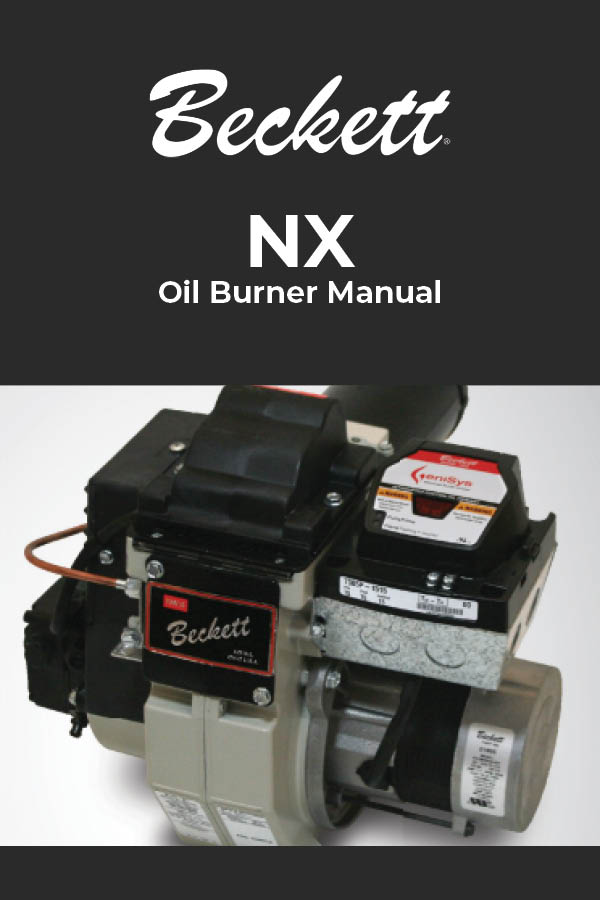
Credit: www.beckettcorp.com
Check Fuel Supply
Regular maintenance of your Beckett Burner ensures optimal performance. One key area to check is the fuel supply. A consistent and clean fuel supply prevents many burner issues. Let’s explore how to inspect the fuel supply step by step.
Inspect Fuel Lines
First, inspect the fuel lines for any visible damage. Look for cracks, leaks, or blockages. Damaged fuel lines can disrupt fuel flow, causing burner problems. Ensure all connections are tight and secure.
Use a flashlight to check hard-to-see areas. A small leak can cause major issues. If you find any damage, replace the fuel line immediately.
Check Fuel Filters
Next, check the fuel filters. Clogged filters restrict fuel flow, affecting burner efficiency. Locate the fuel filter housing and open it carefully.
Remove the filter and inspect it for dirt and debris. Clean or replace the filter if necessary. A clean filter ensures smooth fuel delivery.
Remember to check the filter regularly to maintain your burner’s performance.
| Inspection Task | Frequency |
|---|---|
| Inspect Fuel Lines | Monthly |
| Check Fuel Filters | Every 3 Months |
Inspect Ignition System
When your Beckett burner fails, inspecting the ignition system is crucial. This system ensures the burner lights up correctly. Small issues here can lead to bigger problems. Below, we focus on two key components: electrodes and the ignition transformer.
Check Electrodes
The electrodes create the spark needed to ignite the burner. They must be clean and properly aligned. Here’s how to check them:
- Turn off the power to the burner.
- Remove the burner cover to access the electrodes.
- Inspect for any soot or dirt build-up.
- Clean the electrodes with a soft cloth.
- Ensure they are aligned correctly. Misalignment can prevent proper sparking.
Proper alignment is essential. Use the manufacturer’s guide to ensure the correct distance and positioning.
Test Ignition Transformer
The ignition transformer generates high voltage for the spark. If faulty, the burner won’t light. Follow these steps to test it:
- Turn off the burner and disconnect the power.
- Remove the transformer cover.
- Use a multimeter to check the voltage. It should match the specifications in the manual.
- If the voltage is too low or zero, replace the transformer.
A working transformer is vital for the ignition system. Ensure it is in good condition.
| Component | Action | Tools Needed |
|---|---|---|
| Electrodes | Clean and Align | Soft Cloth |
| Ignition Transformer | Test Voltage | Multimeter |
Regular maintenance of these components ensures your burner functions efficiently. This will save you time and money in the long run.
Evaluate Air Supply
Maintaining the correct air supply is crucial for your Beckett Burner. Without proper air, the burner cannot function efficiently. It is essential to check the air supply regularly to prevent any operational issues.
Inspect Air Filters
Inspecting the air filters is the first step in evaluating air supply. Dirty or clogged filters can restrict airflow. This can cause the burner to run inefficiently or even fail to ignite.
- Turn off the burner before inspection.
- Remove the air filters carefully.
- Check for dirt and debris.
- Clean or replace filters as needed.
Always use the recommended filters for your burner. Clean filters ensure optimal airflow and performance.
Adjust Air Settings
Adjusting the air settings can help improve burner efficiency. Incorrect settings can lead to improper combustion.
- Locate the air adjustment screws.
- Turn the screws to increase or decrease airflow.
- Refer to the manufacturer’s guide for the correct settings.
Proper air settings help achieve a clean and efficient burn. Make adjustments slowly and check the burner performance.
In some cases, you may need to use a combustion analyzer. This tool helps to fine-tune air settings for the best results.
| Step | Action |
|---|---|
| 1 | Turn off the burner |
| 2 | Inspect and clean air filters |
| 3 | Adjust air settings |
Examine Flame Sensor
The flame sensor in a Beckett burner is crucial. It detects the burner flame and ensures safe operation. A faulty sensor can lead to burner shutdowns. Let’s explore how to examine, clean, and replace the flame sensor.
Clean Sensor
First, turn off the burner and disconnect the power. Locate the flame sensor, usually near the burner assembly.
- Remove the flame sensor carefully.
- Use a soft cloth or fine sandpaper to clean the sensor. Avoid using harsh chemicals.
- Ensure all soot and debris are removed.
- Reinstall the sensor and reconnect the power.
Cleaning the sensor can often resolve issues. Regular maintenance can prevent future problems.
Replace Sensor
Sometimes cleaning isn’t enough. If the sensor is damaged, replacement is necessary.
- Turn off the burner and disconnect the power.
- Remove the old flame sensor.
- Purchase a compatible replacement sensor.
- Install the new sensor, ensuring it is properly secured.
- Reconnect the power and test the burner.
Replacing the sensor is straightforward. Ensure you get the correct part for your Beckett burner model.
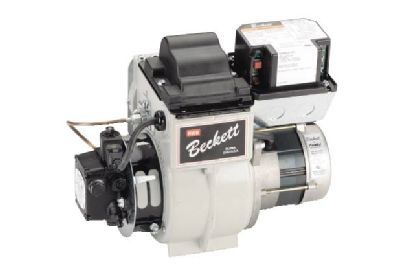
Credit: www.grayfurnaceman.com
Maintenance Tips
Regular maintenance of your Beckett burner ensures its optimal performance. Following these tips can help you avoid costly repairs and ensure safety.
Regular Inspections
Perform regular inspections to keep your Beckett burner running smoothly. Check the burner for any signs of wear or damage. Look for soot buildup on the burner nozzle and electrodes. Ensure that all connections are tight and secure. Inspect the fuel lines for any leaks or blockages.
- Check burner nozzle
- Inspect electrodes
- Ensure secure connections
- Look for fuel line leaks
Professional Servicing
Schedule professional servicing at least once a year. A professional can perform a thorough inspection and cleaning. They can also adjust the settings for optimal efficiency. Regular servicing helps prevent unexpected breakdowns.
| Service | Frequency |
|---|---|
| Inspection | Annually |
| Cleaning | Annually |
| Settings Adjustment | Annually |
Ensure you hire a certified technician. This guarantees the work is done correctly and safely.

Credit: www.youtube.com
Frequently Asked Questions
How To Tell If Your Oil Burner Is Bad?
Signs of a bad oil burner include strange noises, frequent shutdowns, uneven heating, and increased fuel consumption. Check for soot buildup.
How Do I Reset My Beckett 7505 Burner?
To reset your Beckett 7505 burner, press and hold the reset button for 15 seconds. Release the button. The burner should reset.
Why Is My Oil Burner Not Igniting?
Your oil burner might not ignite due to clogged filters, faulty ignition system, or lack of fuel. Check these components.
How To Tell If A Cad Cell Is Bad?
A faulty CAD cell shows no response to light. Check for a lack of voltage change during operation.
Conclusion
Effective Beckett burner troubleshooting ensures optimal performance and longevity. Regular maintenance can prevent most common issues. Always follow safety guidelines and consult a professional if needed. Addressing problems early can save time, money, and stress. Keep your Beckett burner running smoothly with these simple troubleshooting tips.
